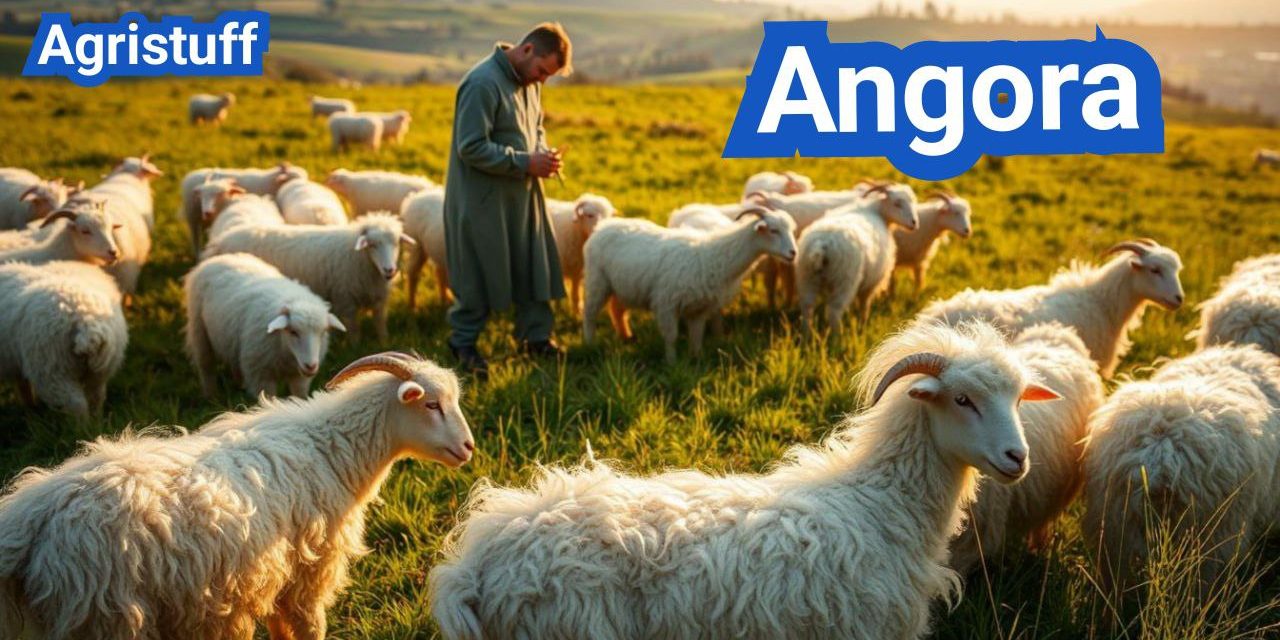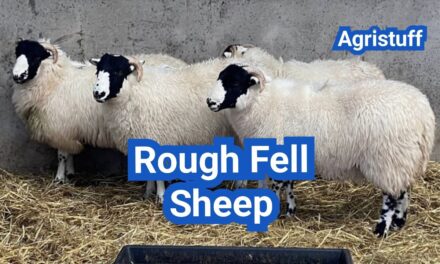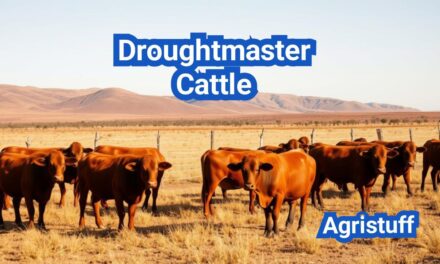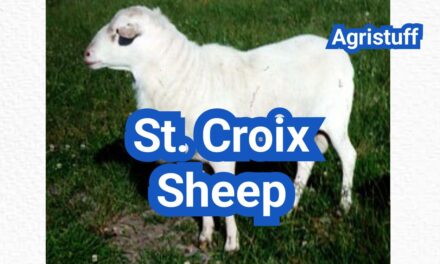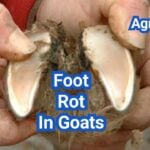The Angora goat is a renowned breed for its exceptional mohair production, originating from the district of Angora in Asia Minor, with a history dating back to biblical times.
This breed is prized for its distinctive fiber, which has made it a significant contributor to the textile industry. Known for their mohair production, Angora goats are characterized by their silky, curly coats, which require regular maintenance.
The breed’s breed traits include a calm temperament and a lifespan of around 10-15 years, making them a viable option for sustainable goat farming practices.
Key Takeaways
- Mohair production is a key characteristic of Angora goats.
- The breed originated in the Angora district of Asia Minor.
- Angora goats are known for their silky, curly coats.
- Their lifespan is around 10-15 years.
- They are a viable option for sustainable goat farming.
The Origins and History of Angora Goats
With roots deeply embedded in Turkish history, Angora goats have traveled the world, leaving a significant mark on the textile industry. Their journey is a fascinating tale of adaptation and innovation, culminating in their current status as a prized breed for mohair production.
Turkish Roots: The Birthplace of Angora Goats
The story of Angora goats begins in Turkey, where they were first bred for their luxurious fleece. The unique climate and geography of the region provided ideal conditions for the development of their distinctive coat.
Historical records indicate that Angora goats were highly valued in Turkey, not only for their mohair but also for their hardiness and adaptability.
Global Spread and Introduction to the United States
As global trade expanded, Angora goats were introduced to new regions, including Europe and later the United States. The first imports to Europe occurred in the 16th century, while it wasn’t until the 19th century that they were introduced to the United States.
The introduction of Angora goats to the United States marked a significant milestone in the development of the domestic mohair industry.
Historical Significance in Textile Production
Angora goats have played a crucial role in the textile industry, particularly in the production of mohair. Mohair’s durability, silk-like appearance, and ability to hold dye made it a highly sought-after fiber.
The following table highlights key milestones in the history of Angora goats:
| Period | Event | Significance |
|---|---|---|
| Ancient Times | Origin in Turkey | Development of unique mohair fleece |
| 16th Century | Introduction to Europe | Expansion of mohair production |
| 19th Century | Introduction to the United States | Establishment of domestic mohair industry |
The history of Angora goats is a testament to their enduring value in the textile industry. From their origins in Turkey to their global spread, Angora goats have left an indelible mark on mohair production.
Angora Goat Breed Characteristics and Traits

The Angora goat breed is renowned for its distinctive characteristics and traits that set it apart from other goat breeds. Understanding these characteristics is crucial for farmers and enthusiasts alike.
Physical Appearance and Distinctive Features
Angora goats are known for their soft, curly coats, which are the source of mohair fiber. They have a compact body with a broad chest and a relatively short tail. Their ears are typically drooping, and they have a straight or slightly convex profile.
Size, Weight, and Growth Patterns
Angora goats are generally small in size. Mature bucks typically weigh between 180-225 pounds, while does weigh between 70-110 pounds. Their growth patterns are influenced by factors such as nutrition and genetics.
Temperament and Behavior
Angora goats are known to be docile and friendly. They are social animals that thrive in the company of other goats. Proper handling from an early age can make them quite tame.
Lifespan and Development Stages
Angora goats have a lifespan of around 10-12 years. Their development stages include kidhood, adolescence, and adulthood. Proper care and nutrition are essential throughout these stages to ensure optimal health and fiber production.
| Development Stage | Age Range | Characteristics |
|---|---|---|
| Kidhood | 0-6 months | Rapid growth, dependent on mother’s milk |
| Adolescence | 6 months-1 year | Transition to solid foods, continued growth |
| Adulthood | 1-10 years | Prime mohair production years |
Understanding Mohair: The Prized Fiber
With its unique properties and aesthetic appeal, mohair has become a sought-after fiber in the world of textiles. Mohair production is a significant aspect of Angora goat farming, yielding a fiber that is both durable and luxurious.
What Makes Mohair Special
Mohair is known for its softness, durability, and ability to take dye well. These characteristics make it a favorite among textile artists and manufacturers alike. The fiber’s ability to hold vibrant colors without fading quickly is particularly valued.
Fiber Properties and Quality Indicators
The quality of mohair is determined by several factors, including its staple length, fiber diameter, and cleanliness. The staple length affects the fiber’s processing and end-use, while the fiber diameter influences its softness and durability.
| Property | Description | Impact on Quality |
|---|---|---|
| Staple Length | Length of the fiber | Affects processing and end-use |
| Fiber Diameter | Thickness of the fiber | Influences softness and durability |
| Cleanliness | Presence of contaminants | Affects overall quality and value |
Comparison to Other Animal Fibers
Mohair is often compared to other animal fibers like wool and alpaca. While it shares some similarities with these fibers, mohair’s unique properties set it apart. For instance, mohair is known for its drapability and resistance to wrinkles, making it ideal for certain textile applications.
Mohair Production Cycle
Mohair is produced twice a year, with an average yield of 5.3 pounds per shearing. The production cycle involves shearing, sorting, and grading the fiber to ensure its quality. Understanding this cycle is crucial for farmers and buyers alike to appreciate the value and challenges associated with mohair production.
Varieties of Angora Goats

Exploring the different varieties of Angora goats reveals a rich tapestry of characteristics and traits. The breed is not limited to a single type; instead, it encompasses a range of diverse goats, each with its unique features.
Colored Angora Goats: Red, Brown, and Black
While white Angora goats are perhaps the most well-known, colored varieties have gained popularity for their vibrant hues and unique fiber characteristics. Colored Angora goats can be found in shades of red, brown, and black, offering a natural palette for fiber artists. These colors are a result of genetic variations and selective breeding programs.
Miniature and Pygmy Angora Goats
Miniature and pygmy Angora goats are smaller versions of the standard breed, making them ideal for smaller farms or homesteads. Despite their size, they produce high-quality mohair that is soft and durable. Their compact size also makes them easier to handle and manage.
Navajo Angora Goats
The Navajo Angora goat is a distinct type that has been developed with a focus on hardiness and adaptability to challenging environments. Originating from breeding programs associated with Navajo lands, these goats are known for their robust health and ability to thrive in various conditions.
Regional Variations and Bloodlines
Regional variations of Angora goats have emerged due to different breeding practices and environmental conditions. These variations can result in distinct bloodlines that are prized for their specific traits, such as fiber quality or growth rate. Understanding these regional differences is crucial for breeders looking to select the right type of Angora goat for their needs.
Getting Started with Angora Goats: A Beginner’s Guide
For those new to the world of Angora goats, getting started requires careful planning and research. Raising Angora goats for beginners involves understanding the basics of their care and management, including adequate space, facilities, and initial investment.
Space and Facility Requirements
Before bringing home your first Angora goats, it’s essential to ensure you have the right space and facilities. Angora goats require a clean, dry, and well-ventilated area to thrive. A minimum of 10 square feet per goat is recommended for shelter. The facility should protect them from harsh weather conditions and predators.
Consider the following when planning your facility:
- Adequate ventilation to prevent respiratory issues
- Protection from wind, rain, and extreme temperatures
- Easy cleaning and maintenance
- Space for feeding and watering equipment
Initial Investment and Ongoing Costs
The initial investment for raising Angora goats includes purchasing the goats, building or renovating facilities, and acquiring necessary equipment. Ongoing costs comprise feed, veterinary care, and shearing expenses. It’s crucial to budget for these costs to ensure the sustainability of your goat farm.
Some of the initial and ongoing expenses to consider are:
- Purchase of Angora goats
- Facility construction or renovation
- Feeding and nutritional supplements
- Veterinary care and vaccinations
- Shearing equipment and supplies
Selecting Your First Angora Goats
Choosing the right Angora goats for your farm is vital. Consider factors such as the goat’s age, health, and fiber quality. Beginners should start with goats that are easy to manage and have a good temperament.
When selecting your first Angora goats, look for:
- Healthy animals with no signs of illness
- Good fiber quality and density
- A calm temperament
- Age: typically, goats between 1-3 years old are a good starting point
Essential Equipment and Supplies
To care for your Angora goats properly, you’ll need the right equipment and supplies. This includes feeding and watering equipment, fencing, and shearing tools.
Some essential items to get started include:
- Feeding troughs and watering buckets
- Fencing materials to secure your property
- Shearing equipment and supplies
- Veterinary care kits and first aid supplies
Housing and Fencing for Angora Goats

The right housing and fencing are essential for safeguarding Angora goats and ensuring their well-being. Angora goats require sturdy fencing and shelter to protect them from predators and harsh weather conditions.
Shelter Design and Requirements
A well-designed shelter is crucial for protecting Angora goats from extreme weather conditions such as heavy rain, snow, and intense sunlight. The shelter should be:
- Well-ventilated to prevent moisture buildup
- Dry and free from drafts
- Spacious enough to accommodate all goats comfortably
- Constructed with durable materials that can withstand various weather conditions
Fencing Options and Considerations
Fencing is a critical aspect of Angora goat housing, as it prevents escape and protects against predators. Some key considerations include:
- Height and Material: Fencing should be at least 5 feet high and made from sturdy materials like wood, metal, or a combination of both.
- Spacing: The spacing between fence posts should be appropriate to prevent goats from getting their heads or horns stuck.
- Electric Fencing: Electric fencing can be an effective option for containing Angora goats, especially when used in conjunction with other fencing types.
Predator Protection Strategies
Protecting Angora goats from predators is vital. Some strategies include:
- Using guard animals like donkeys or dogs to watch over the goats
- Implementing secure fencing that prevents predator entry
- Keeping the goats in a secure, lockable enclosure at night
- Using motion-sensitive lighting or alarms to deter predators
Climate Adaptations for Different Regions
Angora goats can be raised in various climates, but housing and fencing may need to be adapted accordingly. For example:
- In colder climates, shelters should be insulated and protected from wind and snow.
- In hotter climates, providing shade and ensuring good ventilation is crucial.
- In areas with heavy rainfall, ensuring the shelter is waterproof is essential.
By considering these factors, farmers can create a safe and healthy environment for their Angora goats, ultimately improving their productivity and well-being.
Comprehensive Feeding Guide for Angora Goats

Feeding Angora goats requires a deep understanding of their nutritional needs to ensure optimal health and fiber production. A balanced diet is crucial for maintaining their overall well-being and the quality of their mohair.
Basic Nutritional Requirements
Angora goats require a diet rich in nutrients, including high-quality hay, grains, and minerals. Their nutritional needs are specific and must be met to ensure they remain healthy and produce high-quality mohair.
The basic nutritional requirements include:
- Adequate protein for fiber production
- Sufficient energy for growth and maintenance
- Essential vitamins and minerals for overall health
| Nutrient | Requirement |
|---|---|
| Protein | 15-20% of total diet |
| Energy | 2-3 Mcal/kg of diet |
| Calcium | 0.8-1.2% of total diet |
| Phosphorus | 0.4-0.6% of total diet |
Seasonal Feeding Adjustments
Angora goats’ nutritional needs vary with the seasons. During the winter months, they may require more energy to stay warm, while in the summer, they may need more hydration.
Seasonal adjustments include:
- Increasing energy-rich foods during cold weather
- Ensuring access to plenty of fresh water during hot weather
- Adjusting grazing times to avoid extreme temperatures
Supplements and Minerals for Optimal Fiber Production
Supplements and minerals play a crucial role in maintaining the health of Angora goats and the quality of their mohair. Essential minerals include copper, zinc, and selenium.
“Providing the right balance of minerals is key to producing high-quality mohair. A deficiency can lead to poor fiber quality and health issues.”
A well-balanced mineral supplement can help ensure that Angora goats receive all the necessary nutrients for optimal fiber production.
Water Requirements and Management
Adequate water supply is essential for Angora goats. They require access to clean, fresh water at all times to stay hydrated and maintain their health.
Water management strategies include:
- Ensuring water sources are clean and free from contamination
- Providing multiple water sources to prevent competition
- Monitoring water intake to detect any health issues early
By following this comprehensive feeding guide, Angora goat farmers can ensure their animals receive the nutrients they need to thrive.
Health Management and Common Issues

To ensure the longevity and productivity of Angora goats, a comprehensive health management plan is essential. Effective health management involves a combination of preventative care, monitoring for common health issues, and knowing when to seek veterinary assistance.
Preventative Care Schedule
A well-structured preventative care schedule is the foundation of maintaining healthy Angora goats. This includes regular vaccinations, dental care, and hoof trimming. Regular vaccinations help protect against diseases such as CDT (Clostridium perfringens types C and D and Tetanus toxoid).
It’s also crucial to establish a routine for dental care, as Angora goats are prone to dental issues due to their diet and age. Hoof trimming every 6-8 weeks prevents lameness and hoof-related problems.
Parasite Control and Management
Angora goats are particularly susceptible to internal parasites, which can significantly impact their health and mohair production. Implementing an effective parasite control program is vital.
- Regular fecal exams to monitor parasite loads
- Strategic deworming to minimize resistance
- Pasture management techniques, such as rotational grazing
As noted by experts, “A comprehensive parasite control program is essential for maintaining the health and productivity of Angora goats.”
“Parasite control is not just about deworming; it’s about managing the entire grazing system to reduce parasite loads.”
– Dr. Susan Schoenian, Sheep & Goat Specialist
Common Health Problems and Solutions
Angora goats can be prone to various health issues, including pneumonia, parasites, and nutritional deficiencies. Understanding these common problems and their solutions is crucial for effective health management.
| Health Issue | Symptoms | Solution |
|---|---|---|
| Pneumonia | Coughing, lethargy, loss of appetite | Antibiotics, isolation, improved ventilation |
| Parasites | Weight loss, poor coat condition | Deworming, pasture management |
When to Call the Veterinarian
Knowing when to seek veterinary assistance is critical for addressing health issues promptly. Signs that necessitate a call to the veterinarian include severe symptoms, sudden changes in behavior or appetite, and injuries.
Prompt action can prevent minor issues from becoming major health concerns. Regular consultation with a veterinarian helps in developing a tailored health management plan.
Mastering Angora Goat Shearing Techniques

Effective Angora goat shearing techniques are crucial for both the quality of the mohair and the well-being of the goats. Shearing is not just about cutting the fleece; it’s a process that requires careful planning, the right equipment, and a gentle touch to avoid stressing or injuring the animals.
Shearing Equipment and Setup
The right equipment is essential for efficient and safe shearing. This includes high-quality shears, combs, and cutters designed specifically for Angora goats. The shearing area should be clean, well-lit, and free from distractions to ensure a smooth process.
Essential Shearing Equipment:
- Shearing shears
- Combs and cutters
- Shearing table or stand
Step-by-Step Shearing Process
Shearing Angora goats involves a systematic approach to ensure all fleece is removed without causing harm to the goat. The process typically starts with securing the goat, followed by removing the fleece in sections, and finishing with a thorough inspection to ensure no areas are missed.
Key Steps in the Shearing Process:
- Prepare the goat by cleaning and restraining it.
- Begin shearing from the neck and work downwards.
- Use slow, careful strokes to remove the fleece.
Timing and Frequency Considerations
The timing and frequency of shearing depend on factors such as climate, the goat’s health, and the desired fleece quality. Generally, Angora goats are sheared twice a year, but this can vary based on specific conditions.
Post-Shearing Care
After shearing, it’s crucial to provide proper care to the goats to prevent stress and health issues. This includes monitoring their health, providing adequate nutrition, and ensuring they have a clean, comfortable environment.
Post-Shearing Care Tips:
- Monitor the goat’s health closely after shearing.
- Provide a nutritious diet to support recovery.
- Ensure access to clean water and shelter.
Processing and Preparing Mohair

After harvesting, mohair requires careful processing to maintain its quality and prepare it for various textile applications. The processing stage is crucial as it determines the final quality of the mohair, impacting its value and usability in different products.
Sorting and Grading Your Harvest
The first step in mohair processing is sorting and grading. This involves separating the fibers based on their quality, color, and length. High-quality mohair is characterized by its fineness, luster, and strength. Grading is typically done by hand, as it requires a good understanding of the fiber characteristics and their potential end-use.
Cleaning and Washing Techniques
Cleaning and washing are critical to remove dirt, oil, and other impurities that may have accumulated on the fibers during harvesting. Gentle washing techniques are recommended to prevent damage to the mohair. The use of mild detergents and careful rinsing ensures that the mohair retains its natural softness and luster.
As one expert notes, “The cleanliness of the mohair is directly related to its grade and, consequently, its market value.” This underscores the importance of meticulous cleaning and washing practices.
Storage and Preservation Methods
Proper storage and preservation are vital to maintain the quality of mohair after processing. The fiber should be stored in a cool, dry place, away from direct sunlight. Breathable storage bags or containers are recommended to prevent moisture buildup, which can lead to fiber degradation.
Basic Processing for Handcrafters
For handcrafters, basic processing involves carding or combing the mohair to align the fibers and remove any tangles or impurities. This step is essential for spinning or felting projects. Carding prepares the mohair for use in knitting or crochet, while combing produces a more aligned fiber, ideal for spinning.
By following these processing and preparation steps, mohair producers and artisans can ensure that their fiber is of the highest quality, ready for use in a variety of textile applications.
Mohair Marketing and Sales in the USA

Understanding the intricacies of mohair marketing is crucial for producers looking to capitalize on the growing demand for this luxurious fiber. The mohair market in the USA is influenced by various factors, including global trends, production costs, and consumer preferences.
Current Market Trends and Prices
The current market trends for mohair in the USA show a fluctuating demand, largely influenced by the global textile industry. Prices can vary significantly based on the quality, color, and quantity of mohair available.
| Mohair Type | Average Price per Pound | Demand Level |
|---|---|---|
| Fine Mohair | $15-$20 | High |
| Coarse Mohair | $10-$15 | Moderate |
| Colored Mohair | $20-$25 | High |
As noted by industry experts, “The quality of mohair is a significant factor in determining its market price.” (
The mohair industry is highly competitive, with producers needing to focus on quality to remain competitive.
)
Finding Buyers and Distribution Channels
Finding the right buyers and distribution channels is critical for mohair producers. Some of the key distribution channels include:
- Direct sales to textile manufacturers
- Online marketplaces specializing in fibers
- Local craft fairs and fiber festivals
Building relationships with buyers and understanding their needs can help producers tailor their sales strategies effectively.
Value-Added Products and Opportunities
Creating value-added products is a lucrative opportunity for mohair producers. Some examples include:
- Producing yarns and threads for handcrafters
- Creating finished garments or textiles
- Offering mohair blends with other fibers
By diversifying their product offerings, producers can attract a wider customer base and increase their revenue.
Building Your Fiber Business Brand
Building a strong brand is essential for differentiating your mohair products in a competitive market. This involves:
- Developing a unique brand identity
- Engaging with customers through social media and marketing campaigns
- Ensuring consistent quality and customer service
A strong brand can help mohair producers establish a loyal customer base and command premium prices for their products.
Breeding Programs and Genetic Improvement

Genetic improvement through breeding programs plays a significant role in the development of high-quality Angora goats. These programs are designed to enhance the fiber quality and production of mohair, a valuable commodity in the textile industry.
Selecting Breeding Stock
The selection of appropriate breeding stock is the foundation of any successful Angora goat breeding program. Farmers must carefully evaluate the genetic traits of potential breeding animals, focusing on characteristics such as fiber quality, growth rate, and fertility.
Key factors to consider when selecting breeding stock include:
- Fiber quality and characteristics
- Growth rate and size
- Fertility and reproductive health
- Genetic diversity to avoid inbreeding
Breeding Strategies for Fiber Improvement
Effective breeding strategies are crucial for improving the fiber quality of Angora goats. This involves understanding the genetics behind fiber production and applying selective breeding techniques to enhance desirable traits.
Some common breeding strategies include:
- Line breeding to concentrate desirable traits
- Outbreeding to introduce new genetic material
- Selection based on performance records
Record Keeping and Performance Tracking
Accurate record keeping and performance tracking are essential components of a successful breeding program. By monitoring the performance of individual animals and the overall herd, breeders can make informed decisions about breeding stock and strategies.
| Record Type | Importance |
|---|---|
| Pedigree records | Helps in tracing lineage and genetic traits |
| Production records | Essential for evaluating fiber production and quality |
| Health records | Crucial for monitoring health issues and genetic predispositions |
Working with Breed Associations
Engaging with breed associations can provide valuable resources and support for Angora goat breeders. These organizations often offer guidelines, breeding stock registries, and networking opportunities that can aid in the development of effective breeding programs.
By collaborating with breed associations and adhering to established breeding standards, farmers can contribute to the overall improvement of the Angora goat breed and enhance their own breeding programs.
Resources for Angora Goat Farmers
Angora goat farmers can tap into a rich pool of resources, including breed associations and educational programs. These resources are crucial for both novice and experienced farmers looking to improve their practices and stay updated on the latest industry developments.
American Angora Goat Breeders Association
The American Angora Goat Breeders Association (AAGBA) is a key resource for Angora goat farmers in the United States. The association provides breeders with registration services, performance recording, and various educational materials to help improve their breeding programs.
The AAGBA also hosts annual conferences and workshops, offering opportunities for breeders to network, share knowledge, and learn from industry experts.
Educational Programs and Workshops
Various educational programs and workshops are available for Angora goat farmers. These programs cover a range of topics, from basic goat care to advanced breeding techniques. Institutions and organizations offering these programs often include universities, agricultural extension services, and breed associations.
For example, some programs may focus on nutrition management, health care, and fiber production techniques, providing farmers with the knowledge needed to optimize their operations.
Online Communities and Support Groups
Online communities and support groups have become invaluable resources for Angora goat farmers. These platforms allow farmers to share experiences, ask questions, and receive advice from peers and experts alike.
Some popular online forums and social media groups are dedicated to Angora goat farming, providing a space for discussion on various topics, including breeding strategies and marketing tips.
Books and Publications for Further Learning
For those looking to deepen their understanding of Angora goat farming, numerous books and publications are available. These resources cover a wide range of topics, from husbandry practices to fiber processing techniques.
Publications from reputable sources, such as breed associations and agricultural universities, offer reliable information and practical advice, making them essential tools for farmers seeking to improve their craft.
The Rewarding Journey of Raising Angora Goats
Raising Angora goats can be a fulfilling experience, offering a unique blend of agricultural heritage and potential income through mohair production. As we’ve explored throughout this article, these special animals require careful management, from housing and feeding to shearing and health care.
The rewards of Angora goat farming extend beyond the financial benefits. Working with these gentle creatures can be a deeply satisfying experience, connecting farmers to a rich history of textile production and the land.
Mohair production, in particular, offers a unique opportunity for farmers to contribute to the global textile industry. With the right knowledge and skills, Angora goat farmers can produce high-quality mohair, capitalizing on the growing demand for sustainable and natural fibers.
As the Angora goat farming community continues to evolve, resources such as the American Angora Goat Breeders Association provide valuable support for farmers. By embracing best practices and staying informed, those raising Angora goats can enjoy a rewarding journey, reaping the benefits of this specialized form of agriculture.
FAQ
What is the origin of Angora goats?
Angora goats originated in Turkey, where they have been bred for centuries for their mohair fiber.
What are the characteristics of Angora goats?
Angora goats are known for their distinctive appearance, with a thick coat of mohair, a gentle disposition, and a relatively small size compared to other goat breeds.
What is mohair, and what makes it special?
Mohair is a silk-like fiber produced by Angora goats, prized for its softness, durability, and resistance to wrinkles and shrinkage.
How often should Angora goats be sheared?
Angora goats typically require shearing twice a year to prevent their mohair from becoming matted and to maintain their overall health.
What are the nutritional requirements of Angora goats?
Angora goats require a balanced diet that includes high-quality hay, grains, and minerals to support their overall health and fiber production.
How can I protect my Angora goats from predators?
To protect your Angora goats from predators, consider using fencing, guard animals, and other security measures to safeguard your flock.
What are the benefits of raising Angora goats?
Raising Angora goats can be a rewarding experience, providing a source of income through mohair sales, as well as a unique opportunity to work with these special animals.
How do I get started with raising Angora goats?
To get started with raising Angora goats, research the breed, consider your resources and facilities, and seek guidance from experienced breeders and industry associations.
What is the American Angora Goat Breeders Association?
The American Angora Goat Breeders Association is a non-profit organization dedicated to promoting the Angora goat breed and providing resources and support to breeders.
How can I improve the quality of my mohair?
To improve the quality of your mohair, focus on proper nutrition, health management, and shearing techniques, as well as selecting high-quality breeding stock.
What are the market trends for mohair in the USA?
Mohair market trends in the USA can vary depending on factors such as supply and demand, global market conditions, and consumer preferences.
Can I raise Angora goats on a small farm or homestead?
Yes, Angora goats can be raised on a small farm or homestead, provided you have adequate space, facilities, and resources to support their needs.
What are the most common health issues in Angora goats?
Common health issues in Angora goats include parasites, respiratory problems, and hoof issues, which can be managed through proper health care and preventative measures.
Conclusion of: Angora Goat | Mohair Production and Breed Traits
Angora goat farming holds a unique position in U.S. agriculture, focusing on the production of mohair—one of the most luxurious natural fibers globally. Known for their distinctive appearance and valuable fleece, Angora goats combine economic opportunity with manageable care requirements. This guide covers everything farmers and fiber enthusiasts need to know about Angora goats, including their characteristics, mohair production, care, and market potential. Learn more about Angora goats from the USDA.
What Is an Angora Goat?
An Angora goat is a breed specifically developed for producing mohair, a silky fiber harvested from their coats. Originating from Turkey, Angora goats are now raised worldwide, with strong populations in the United States, especially in Texas. Explore the history of Angora goats from Oklahoma State University.
Why Angora Goats Are Popular in the USA
Farmers value Angora goats for:
- High-value mohair production
- Manageable size and temperament
- Contribution to sustainable textile markets
- Strong international demand for mohair products
Read about the U.S. mohair industry from Texas A&M AgriLife.
Physical Characteristics of Angora Goats
Typical Angora goat traits include:
- White coats (although colored Angoras exist)
- Long, curly mohair fibers
- Horned with spiral-shaped horns
- Small to medium size: Bucks 180–225 lbs, Does 70–110 lbs
See breed standards from the American Angora Goat Breeders Association.
Mohair Fiber Production
Angora goats produce mohair, a fiber prized for its:
- Strength and elasticity
- Natural sheen and luster
- Dyeability into vibrant colors
- Insulating properties despite being lightweight
Discover mohair’s textile uses from The Woolmark Company.
Shearing Angora Goats
Angora goats are sheared twice a year. Key facts:
- Each goat yields 5–10 pounds of mohair annually
- Regular shearing prevents fiber matting and health issues
- Mohair grows at approximately 1 inch per month
Learn proper shearing techniques from the University of Maryland Extension.
Feeding and Nutrition for Angora Goats
To maintain healthy fiber production, Angora goats require:
- High-quality pasture supplemented with hay
- Additional protein during fiber regrowth
- Free-choice minerals formulated for fiber goats
- Clean, fresh water available at all times
Get feeding guidelines from Penn State Extension.
Housing and Shelter Needs
Angora goats are more sensitive to weather than other breeds:
- Provide dry, wind-protected shelters
- Avoid wet conditions, which can lead to fleece damage
- Ensure good ventilation without drafts
See shelter recommendations from Oregon State University.
Breeding and Reproductive Traits
Reproductive management of Angora goats involves:
- Breeding season typically in fall
- Average kidding rate: 1–2 kids per doe
- Careful monitoring of pregnant does to avoid fleece damage
- Selecting bucks with strong mohair-producing genetics
Read breeding best practices from Iowa State University.
Health Management for Angora Goats
Unique care considerations for Angora goats:
- Higher susceptibility to parasites (internal and external)
- Routine deworming and health checks
- Hoof trimming every 6–8 weeks
- Monitoring for fleece rot and skin infections
Find health tips from the Merck Veterinary Manual.
Mohair Grading and Marketing
Mohair from Angora goats is graded by:
- Fiber diameter (microns)
- Length
- Strength and luster
- Cleanliness and lack of vegetable matter
U.S. farmers sell mohair through: - Specialty fiber markets
- Textile mills
- Direct-to-consumer artisan markets
- Online sales platforms
Explore grading standards from the Mohair Council of America.
Economic Benefits of Raising Angora Goats
Farmers value Angora goats for:
- Steady mohair income (biannual harvests)
- Low overhead compared to other livestock
- Niche market opportunities with premium pricing
- Compatibility with small-scale and homestead farms
See economic insights from the National Sustainable Agriculture Information Service.
Sustainable Farming and Angora Goats
Angora goats contribute to sustainable agriculture through:
- Low environmental impact
- Minimal land requirements compared to cattle or sheep
- Mohair as a renewable, biodegradable fiber resource
Learn about sustainable fiber farming from Fibershed.
Pros of Raising Angora Goats
- High-value mohair fiber production
- Manageable herd sizes for small farms
- Niche market potential in U.S. and international markets
- Long productive lifespan (10–12 years)
Cons of Raising Angora Goats
- Requires twice-annual shearing
- More sensitive to cold and wet conditions
- Higher parasite management needs
- Niche market dependency
Final Thought
Angora goat farming offers a unique opportunity for U.S. farmers looking to diversify their income through fiber production. With proper care, feeding, and marketing strategies, raising Angora goats can be both financially rewarding and environmentally sustainable. Whether you’re a commercial rancher or a small-scale fiber enthusiast, Angora goats provide a valuable addition to modern livestock operations. For more resources, visit the American Goat Federation.

